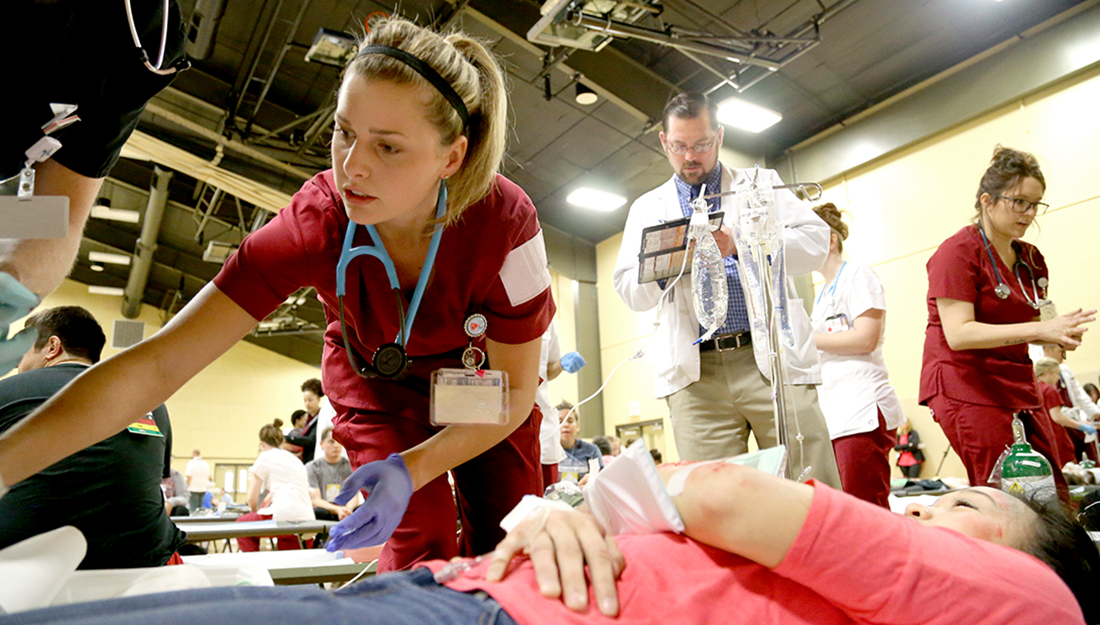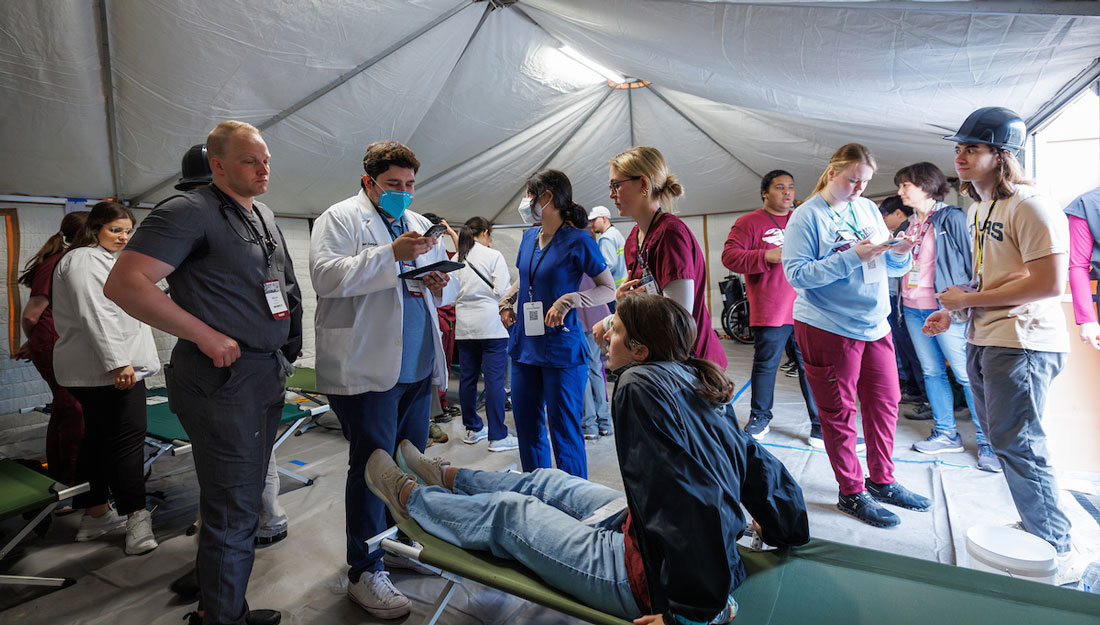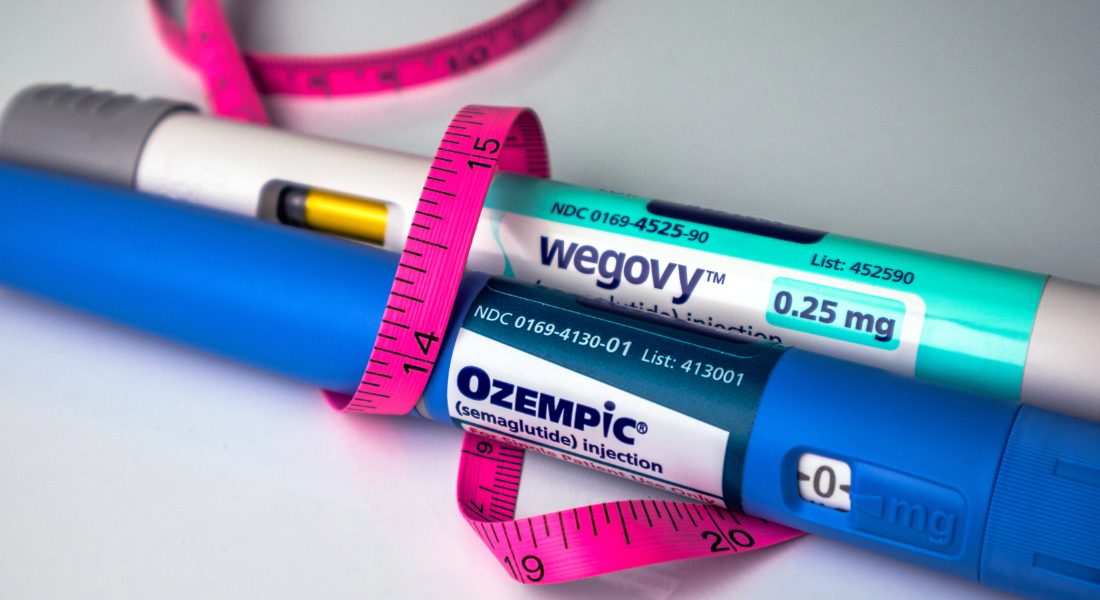- Christina Sumners
- Nursing, Pharmacy, Show on VR homepage
Changing the future of health education with interprofessional collaboration
How the Texas A&M University Health Science Center is training future health professionals in ‘team medicine’

How the Texas A&M University Health Science Center is training future health professionals in ‘team medicine’
Interprofessional education in the health care disciplines has traditionally involved nursing students and medical students learning how to work together to provide the best possible patient care—just like they will be doing in their clinics or hospitals once they graduate.
However, this kind of training isn’t just for future nurses and physicians: The Texas A&M University College of Dentistry offers a new oral and maxillofacial radiology residency in conjunction with medical radiology residents at Baylor University Medical Center at Dallas, and now pharmacists are also getting into the game.
“Interprofessional education occurs when students from two or more professions learn with, from and about each other to improve collaboration and the quality of care,” said Christine Kaunas, MPH, director for faculty excellence and diversity in the Office of Academic Affairs at the Texas A&M University Health Science Center. She will also be leading the Health Science Center’s interprofessional education (IPE) initiatives.
Although many people’s perception of pharmacists is of someone who dispenses prescriptions, modern pharmacy education emphasizes the profession’s indispensable role in the health care team.
“Their role is important because pharmaceuticals and drug interactions are going to be increasingly important as we have more medication at our fingertips and precision medicine makes each individual’s care more complicated,” Kaunas said.
“Health care teams of the future will include members from many different domains coming together to provide excellent care to patients at all stages within the medical system,” said Bree Watzak, PharmD, assistant professor of pharmacy practice at the Texas A&M Irma Lerma Rangel College of Pharmacy. “The college’s most robust participation in interprofessional education is through the annual Disaster Day event.”
Disaster Day is a mock disaster simulation organized and executed by nursing students.
“Faculty and students from medicine, public health, nursing and pharmacy all work together to make the event a true interprofessional experience,” said Michelle M. Yazdchi, a third-year pharmacy student and participant in this year’s Disaster Day. “The Rangel College of Pharmacy was well represented by students at various stages in the professional program assuming roles as patients, dispensing and clinical pharmacists.”
“It certainly helped me to develop better communication skills, the ability to work interprofessionally with various team members and personalities and to understand the importance of delegating,” said Alexis Cooper ’15, the 2015 Disaster Day incident commander. “It also allowed me to develop the courage to speak up, as a patient advocate, when something important is being overlooked or if there are perspectives that are not in the patient’s best interest.”
New initiatives
“IPE has been going on for a long time, even before it was called IPE, but it’s been ad hoc,” Kaunas said. “Lately, there has been a paradigm shift in how we provide professional development for our faculty and train our students.”
On a national level, the Interprofessional Education Collaborative (IPEC) now includes representatives from the founding disciplines—nursing, medicine, dentistry, pharmacy and public health—as well as newer members from physical and occupational therapy, psychology, veterinary medicine, optometry, social workers and physician assistants. Texas has its own group—the Texas Task Force on Interprofessional Education—to coordinate these efforts among the health science centers in the state.
READ MORE: Interprofessional education—more than learning together
Health Science Center medical and nursing students regularly use the Clinical Learning Resource Center, located on the Bryan and Round Rock campuses, to participate in IPE within their respective coursework, but for public health and pharmacy students—and veterinary medical students, for that matter—it plays a far more tangential role in their education. Pharmacy professors are hoping to change that.
“A strong foundation of interprofessional relationships and appreciation of each profession’s skill set throughout the pharmacy curriculum may better prepare students to work on interprofessional teams,” Watzak said.
The Health Science Center as a whole is also working to systematize its IPE offerings. Along with the hiring of Kaunas, a new IPE leadership team with representatives from each of the colleges will work to coordinate to make sure all students are working cross-professionally. The Health Science Center will also have a database to make it easy to assess current programs, plan for the future, and show accrediting agencies past IPE accomplishments.
“We want to encourage further opportunities for interprofessional education involving the students and faculty of the Rangel College of Pharmacy at all stages of the curriculum,” Watzak said. “Utilization of different formats for IPE, both large and small, reinforces the common goal of patient centered care and refines problem solving strategies.”
“When pharmacists round with nurses and doctors, they can help talk about drug interactions and make the best drug choices for the patient,” Kaunas added. “We see that team-based patient-centered care provides for better and safer health outcomes.”
Media contact: media@tamu.edu


